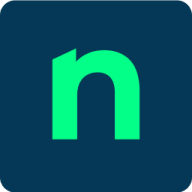

Splunk Observability Cloud and NinjaOne both compete in the IT monitoring and management sector. Splunk has an advantage for organizations requiring extensive observability capabilities, while NinjaOne stands out for ease of use in remote device management and cost-effectiveness for smaller companies.
Features: Splunk Observability Cloud offers comprehensive monitoring, log analytics, and real-time problem-solving capabilities with specialized custom dashboards. It integrates well with cloud-native applications, providing detailed visibility across environments. Its advanced data visualization tools cater to users needing in-depth insights. NinjaOne provides remote monitoring, automated remote management, and reliable patch management. It simplifies device management with intuitive remote access and is known for its ease of use, favorable for IT administrators. NinjaOne’s strengths lie in endpoint device management and responsive user interface.
Room for Improvement: Splunk Observability Cloud can benefit from more cost-effective solutions, improved platform integration, and simplification of its complexity. Enhancements in automated data integration and clearer documentation are also desired. NinjaOne needs to expand integration options, especially with third-party tools, enhance user interface design, and improve reporting features. Intuitive features for system monitoring and more efficient reporting are areas where it can improve.
Ease of Deployment and Customer Service: Splunk Observability Cloud supports deployment across on-premises and hybrid clouds. Its flexibility is praised, but setup complexity is a noted challenge, requiring detailed user understanding. Customer support is generally effective, though response times vary. NinjaOne provides a swift cloud-based deployment that is ideal for rapid setup and scalable device management. NinjaOne’s customer service is responsive, offering valuable support to IT teams seeking direct assistance.
Pricing and ROI: Splunk’s pricing, based on data volume, can be high for extensive use, though users acknowledge ROI through enhanced visibility and productivity. Its advanced features justify the cost for some organizations. NinjaOne is cost-effective, particularly for small to mid-sized companies. It offers flexible licensing based on device count, with negotiations available, providing good value. Users frequently experience ROI in managing IT resources and improving operational efficiency.
NinjaOne enables significant time savings, reducing my workload by 40% to 50%, primarily due to remote management capabilities.
Using Splunk has saved my organization about 30% of our budget compared to using multiple different monitoring products.
Anyone working in front-end management should recognize the market price to see the true value of end-user monitoring.
I have definitely seen a return on investment with Splunk Observability Cloud, particularly through how fast it has grown and how comfortable other teams are in relying on its outputs for monitoring and observability.
Our experience with escalation supports, including auto escalation to third-level or engineering support, has been very positive.
The customer support at NinjaOne is excellent, rated ten out of ten.
I rate customer service and support for NinjaOne at seven out of ten due to slow response times.
On a scale of 1 to 10, the customer service and technical support deserve a 10.
They have consistently helped us resolve any issues we've encountered.
They often require multiple questions, with five or six emails to get a response.
I would rate the scalability of NinjaOne as ten out of ten.
The design suggests it is scalable.
We've used the solution across more than 250 people, including engineers.
As we are a growing company transitioning all our applications to the cloud, and with the increasing number of cloud-native applications, Splunk Observability Cloud will help us achieve digital resiliency and reduce our mean time to resolution.
I would rate its scalability a nine out of ten.
I would rate the stability a ten out of ten.
I would rate its stability a nine out of ten.
We rarely have problems accessing the dashboard or the page.
Unlike NetScout or regular agents for APM, RUM has many problems during the POC phase because customer environments vary widely.
Security and reporting, including business intelligence tools, are adequate.
The inclusion of XENServer and Proxmox as virtual platforms in NinjaOne is currently missing.
The network monitoring needs to be improved.
The out-of-the-box customizable dashboards in Splunk Observability Cloud are very effective in showcasing IT performance to business leaders.
The next release of Splunk Observability Cloud should include a feature that makes it so that when looking at charts and dashboards, and also looking at one environment regardless of the product feature that you're in, APM, infrastructure, RUM, the environment that is chosen in the first location when you sign into Splunk Observability Cloud needs to stay persistent all the way through.
There is room for improvement in the alerting system, which is complicated and has less documentation available.
The pricing for NinjaOne is appropriate for small companies.
NinjaOne is reasonably priced, particularly with the inclusion of TeamViewer, SentinelOne, and Bitdefender.
The price or licensing of NinjaOne is a little bit high.
Splunk is a bit expensive since it charges based on the indexing rate of data.
It is expensive, especially when there are other vendors that offer something similar for much cheaper.
It appears to be expensive compared to competitors.
The software's automation tools have solved critical deployment problems for small businesses.
A significant feature of NinjaOne is its remote access capability, which is essential for my clients’ home office usage.
Every month, every quarter, I see new features, and it is always evolving.
Splunk provides advanced notifications of roadblocks in the application, which helps us to improve and avoid impacts during high-volume days.
For troubleshooting, we can detect problems in seconds, which is particularly helpful for digital teams.
It offers unified visibility for logs, metrics, and traces.
| Product | Market Share (%) |
|---|---|
| Splunk Observability Cloud | 1.2% |
| NinjaOne | 0.5% |
| Other | 98.3% |


| Company Size | Count |
|---|---|
| Small Business | 16 |
| Midsize Enterprise | 2 |
| Large Enterprise | 1 |
| Company Size | Count |
|---|---|
| Small Business | 20 |
| Midsize Enterprise | 10 |
| Large Enterprise | 43 |
NinjaOne provides comprehensive remote monitoring, troubleshooting, and automation via a user-friendly web interface. With a robust mobile app and integration capabilities, it appeals to small businesses seeking cost-effective management solutions.
NinjaOne is designed to streamline IT operations through its remote monitoring, patch management, and automation capabilities. Its integration with Bitdefender and ongoing feature enhancements are valuable, although users express a desire for more third-party compatibility and smoother deployment processes. The platform's SLA system enhances performance tracking, while its continual development is a key attraction. Despite some calls for a more intuitive graphical interface and advanced reporting features, it remains an asset for managed service providers and businesses adapting to cloud-based environments.
What are the most important features?NinjaOne is widely employed across different sectors for server and workstation management, network infrastructure oversight, and client computer support. With its cloud-based framework, it supports managed service providers and businesses shifting to the cloud, ensuring seamless software deployment and improved asset management, making it integral to modern IT environments.
Splunk Observability Cloud offers sophisticated log searching, data integration, and customizable dashboards. With rapid deployment and ease of use, this cloud service enhances monitoring capabilities across IT infrastructures for comprehensive end-to-end visibility.
Focused on enhancing performance management and security, Splunk Observability Cloud supports environments through its data visualization and analysis tools. Users appreciate its robust application performance monitoring and troubleshooting insights. However, improvements in integrations, interface customization, scalability, and automation are needed. Users find value in its capabilities for infrastructure and network monitoring, as well as log analytics, albeit cost considerations and better documentation are desired. Enhancements in real-time monitoring and network protection are also noted as areas for development.
What are the key features?In industries, Splunk Observability Cloud is implemented for security management by analyzing logs from detection systems, offering real-time alerts and troubleshooting for cloud-native applications. It is leveraged for machine data analysis, improving infrastructure visibility and supporting network and application performance management efforts.
We monitor all Network Monitoring Software reviews to prevent fraudulent reviews and keep review quality high. We do not post reviews by company employees or direct competitors. We validate each review for authenticity via cross-reference with LinkedIn, and personal follow-up with the reviewer when necessary.